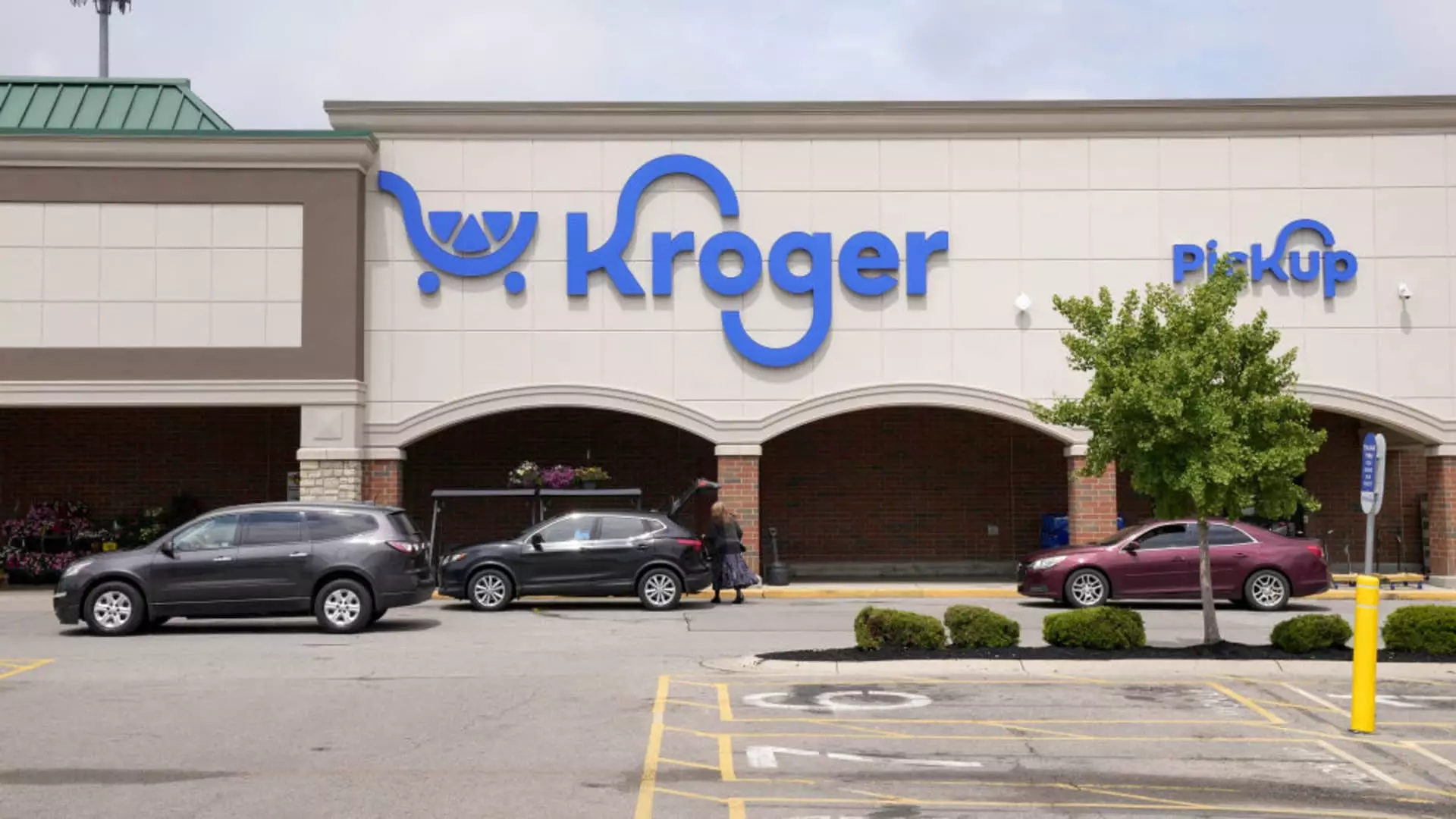Last Friday, Kroger experienced a significant boost in its stock price, climbing nearly 10% after enhancing its full-year sales forecast. This upswing is tethered to a paradigm shift in consumer behavior, as shoppers gravitate towards affordability—keenly seeking lower-priced store brands in an era of rising living costs. Kroger’s revised prediction of a 2.25% to 3.25% year-over-year increase in identical sales, a measure excluding volatile variables like store openings and closures, seems to paint a picture of resilience in a challenging economic landscape. Superficially, it might appear that Kroger is thriving, especially when compared to the modest growth of the S&P 500, which barely scraped up 1% in the same timeframe.
However, one must take a breath before succumbing to the euphoria of rising stock prices. The reality is that the very metrics celebrated—the growth in identical sales—could be misinterpreted. The post-pandemic grocery landscape has shifted drastically, with people becoming more price-sensitive, urging retailers to adjust their strategies accordingly. Although Kroger reportedly saw its e-commerce sales rise by an impressive 15%, it’s essential to measure such growth against the backdrop of a digital grocery market that has simply exploded in recent years. Is a 15% uptick enough to distinguish Kroger as market leader, or is it merely the bare minimum required to keep pace?
Crisis Wrapped in Opportunity?
Kroger’s leadership has undergone significant changes, including the resignation of long-standing CEO Rodney McMullen, amidst an investigation into personal conduct, and ongoing legal tussles related to the blocked $25 billion merger with competitor Albertsons. While the arrival of a new Chief Financial Officer, David Kennerley, could usher in a much-needed innovative approach, one must ponder: is this merely a temporary fix to a much deeper set of challenges?
The company is caught in a whirlwind—it must regain consumer trust while reassuring investors amidst legal woes and corporate restructuring. As an interim CEO, Ron Sargent has proclaimed a focus on catering to value-driven customers through strategic pricing adjustments and promotional simplifications on over 2,000 products. This tactic, while commendable, feels reminiscent of a band-aid placed over a much deeper wound rather than a long-term solution. Larger pack sizes and increased coupon usage might drive short-term gains, but what does this say about consumer sentiment? Is Kroger merely surviving instead of thriving?
A Dangerous Reliance on Private Labels
There is an undeniable uptick in the growth of Kroger’s private labels, which have outperformed national brands for seven consecutive quarters. Simple Truth and Private Selection, highlighting organic and gourmet items, not only suggest a strategic pivot but also represent the store’s increasing reliance on private labels to lure in cost-conscious consumers. While some may hail this as innovation, I view it through a more critical lens.
Private labels can create a false sense of security. Relying too heavily on the success of these inferior products could backfire if the market turns again—especially considering brand loyalty plays a crucial role in the grocery sector. Consumers often find comfort in familiar brands, and any loss of that emotional connection might lead to significant backlash. If the consumer finds little value in Kroger’s private offerings and returns to name brands once the tide changes, where does that leave the company?
Tariffs and Future Challenges
While Kroger has proclaimed minimal impact from tariffs on imports thus far, any complacency could be detrimentally naïve. The retail landscape is immense, fraught with risks from competitors like Walmart and Costco that are not only vying for price-conscious customers but are also utilizing powerful technology to streamline operations and enhance customer experience. Such competition can weather any temporary advantages seen today.
Kroger’s plan to close approximately 60 stores over the next 18 months serves as a pragmatic response to underperformance. Yet, the very fact that closures are necessary raises questions about the strategic direction of future growth amidst increasing competition. Furthermore, as Kroger looks to open new stores in high-growth areas, the risk of overextension looms. The current economic climate is volatile, and the forecast is anything but certain.
In totality, Kroger’s stock surging amidst its complex web of transformations reflects more about the volatility of consumer behavior than it does about sustainable corporate prowess. The superficiality of growth metrics hides an underlying struggle that could unravel just as quickly as it has risen. It’s time for the company to rethink its approach, pivot away from band-aids, and genuinely innovate rather than simply reacting to market trends.

